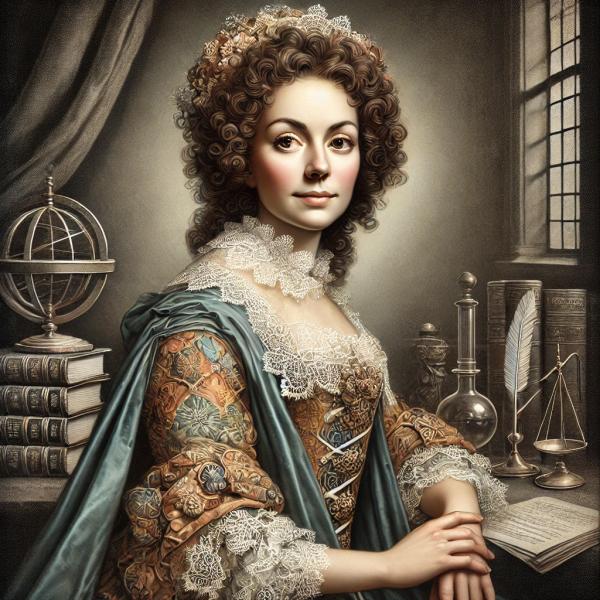
“Without Aristotle’s Physics, there would have been no Galileo.” - Martin Heidegger
Before the scientific method (demanding inductive reasoning and empirical evidence) was developed by Francis Bacon in the 1600s, natural philosophy, the "systematic study of nature," was the most intellectually rigorous and systematic approach to understanding the Universe. The school began in the first millennium BCE when Thales, Anaximander, and Anaximenes began to explain natural phenomena without recourse to creation myths and Greek gods. Then came Socrates, Plato, and Aristotle, refining the examination and expanding the inquiry to humans. The mode of thought we recognize today as “scientific inquiry,” or the scientific method grew from these initial approaches.
The quintessential question facing natural philosophers was reconciling a deistic concept of creation with a natural one. Early efforts sought to meld or weave the two competing schools: what might be called integrating creationism or intelligent design with empiric science.
Many early natural philosophers, like Newton and Boyle [1], were also theologians who trafficked in biblical literature and exegesis, zippering the religion versus science divide. The contribution of women to early science and pre-science has been all but ignored. One key contributor who had the audacity to tangle with her contemporaries, Hobbes and Descartes, was Margaret Cavendish, the Duchess of Newcastle. Decades before Isaac Newton published his pioneering book the Mathematical Principles of Natural Philosophy, Lady Margaret was making waves.
In the beginning….
The youngest of eight children, Margaret was born to Sir Thomas Lucas and Elizabeth Leighton in Essex, England, in 1623, a time when the Brits were politically divided and dissension between royalists and parliamentarians was rife. Plagued by penury, extreme bashfulness, family separation, and the vicissitudes of civil war, and lacking a sophisticated education (she was taught to read and write and studied singing, dancing, and music, customary academic pursuits of young aristocratic women), she managed to publish a dozen tomes of poetry, philosophy, plays, romances, essays, and works of natural philosophy and proto-science, including Observations Upon Experimental Philosophy, (first published in 1666) and Grounds of Natural Philosophy (in 1668) before she died at the untimely age of 50. She was also the author of what is likely the earliest proto-science fiction novel, the utopian romance The Blazing World.
Her early life included a stint in France as a lady-in-waiting to the exiled English queen, Henrietta Maria. There, she met her soon-to-be husband, William Cavendish, who became the 1st Duke of Newcastle-upon-Tyne in 1645. Cavendish, 30 years Margaret’s senior, was an early supporter of women, assisting Margaret in publishing her books under her own name, a rarity at the time. Her marriage (and later wealth) gave her the status to mix with the scientific literati of the day and finance publication of her works, helping overcome the prevailing misogyny, exemplified by Martin Luther’s comment:
“If women grow weary or even die bearing children, that doesn’t harm anything. Let them bear children to death; they are created for that.”
Margaret’s (Natural) Philosophy:
Presaging quantum theory and rejecting knowledge obtained via the senses (e.g., via observation), the purview of experimentalism, Cavendish was skeptical of the scientific method, arguing that instruments distort rather than reveal nature. Like her contemporary natural philosophers, Margaret relied on reason to elucidate the workings of the universe. And reason, she did, coming to believe that there is a stark division between the “material natural soul,” an earthly corporeal soul fit for examination by natural philosophy, and the supernatural “divine soul,” an immaterial concept fit for theology.
Cavendish’s contemporary, René Descartes, proposed a metaphysical system of mind-body dualism, describing two finite substances: matter and mind. Descartes maintained that animals and humans are ‘automata,’ mechanical devices differing from artificial devices only in their degree of complexity. Cavendish initially preferred a vitalist model, holding that living organisms are fundamentally different from non-living entities because they contain some non-physical element, like a fluid or spirit, and are governed by different principles than inanimate objects. Ultimately, repudiating both atomism (proposing that the physical universe is composed of fundamental indivisible components known as atoms) and vitalism, Cavendish described a new theory of matter, Vitalist Materialism, where nature is not just material but also eternal, infinite, self-moving, self-knowing and alive, and that parts of nature have free will.
“Nature is material, or corporeal, and so are all her Creatures, and whatsoever is not material is no part of Nature.” – Philosophical Letters
Called a daring thinker by science historian Nicholas Spencer, Spencer claims her ideas presaged Darwinian thought by two centuries. “Rather than being Cartesian automata,” Cavendish wrote that “beasts were possessed of a reason and language after their own kind, that was inaccessible to humans.”
“I always took delight in a singularity, even in accouterments of habits.” – Margaret Cavendish
While pathologically bashful, Cavendish was paradoxically outspoken about her quest for fame. Perhaps her inability to bear children generated a longing for her works to serve as her legacy, earning her the “immortality” others expect through offspring. However, as bashful as she was, she was unusually flamboyant and original in dress and self-presentation. Designing her own rather luxurious wardrobe, which at times conscripted typically male styles, she was known for disregarding convention (decorating her nipples for display) and presenting herself in extravagant costumes.
Indicative of Cavendish’s attitude toward herself and of other people’s reaction to her was her insistence on cultivating originality in all her endeavors She similarly regarded novel scientific mannerisms with skepticism, including the new school of empiricism. That said, she eagerly sought and was invited to visit the newly formed Royal Society of London, the first woman to be granted such an audience in May of 1667, where she was “experimentally” entertained by the Society’s founder, Chemist Robert Boyle and his assistant, Robert Hooker.
Cavendish's work was not taken seriously until recently, initially due to gender-based societal norms, the lack of formal educational opportunities for women, and institutional barriers that kept women from full participation in scientific and intellectual circles. Her work was trivialized, ridiculed, even maligned, often by women. One female author “… claim[ed] that “there are many soberer People in Bedlam.”
“She has the irresponsibility of a child and the arrogance of a Duchess…. There is something noble and Quixotic and high-spirited, as well as crack-brained and bird-witted, about her.” - Virginia Woolf
Virginia Woolf’s attacks were amongst the most vicious, describing Cavendish “as woman thwarted by her lack of education” and describing her work in similar disparaging terms: “her ideas poured out “higgledy-piggledy in torrents of prose, poetry, and philosophy,” before describing Cavendish’s prose as a “giant cucumber.”
This rejection constrained the coveted acceptance and recognition that Margaret craved. More recent scholars have explained that “[t]he stylistic traits that earlier readers found reprehensible—the failure of decorum, the excess, the indiscriminate mixing of science and art—may be re-described more positively as proof of, among other things, Cavendish’s protofeminism or her prescient critiques of scientific empiricism.”
Thank God for progress.
[1] Boyle, co-founder of the Royal Society of London in the 1660s, was a natural philosopher involved in hydrostatics, physics, medicine, earth sciences, natural history, and alchemy, as well as Christian ethical essays and theological tracts on biblical language, the limits of reason, as well as translation of Scriptures. Amongst other well-known natural philosophers were Newton, Descartes, the founder of Cartesian thought; Thomas Hobbes of Leviathan fame, whose work on optics credentials him as a natural philosopher, and Lord Kelvin. Their work, outlook, and means of analysis – if not their conclusions - were critical to the development of modern science. A word in defense of my profession: Bacon (the originator of the scientific method) and Descartes were lawyers.
Sources: Nicholas Spencer, Magisteria: The Entangled History of Science and Religion
Francesca Peakcock, Pure Wit, The Revolutionary Life of Margaret Cavendish
Margaret Cavendish, Observations upon Experimental Philosophy, reviewed by Karen Detlefsen



